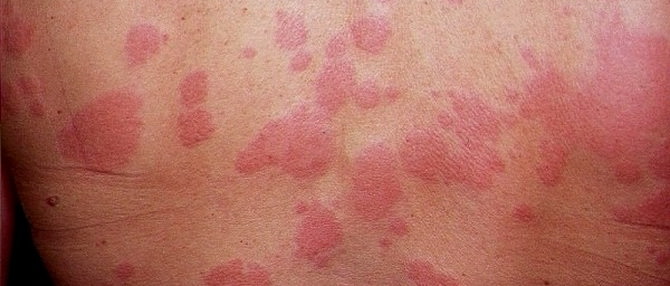Urticaria is one of the most frequent skin conditions. It is characterized by swollen itchy plaques and papules, with or without angioedema. In most forms of urticaria, the skin rash is transitory, the spontaneous wheals generally disappearing within 24 hours. The lesions generally remit without pigmentation changes or scars. Urticaria currently is divided into the following categories: spontaneous urticaria, physical agent urticaria and other types of urticaria.
Spontaneous urticaria is, in its turn, subdivided, depending on the duration of the disease, into: acute and chronic spontaneous urticaria.
Chronic Spontaneous Urticaria is caused by the spontaneous onset of the symptoms for more than 6 weeks and it is much more frequent than initially estimated. Physical agent urticaria and the other types of urticaria share the fact that the symptoms are induced by various triggers (low temperatures, heat, pressure, physical exercising). Unlike them, in the case of chronic spontaneous urticaria, the lesions occur without an obvious stimulus. Even though all age groups may be affected, the highest incidence was noticed between 20 and 40 years of age. It seems that women suffer from urticaria twice as frequently than men. The duration of the disease is of 1-5 years, but it might last longer in more severe cases, associated with angioedema, when it occurs in combination with physical agent urticaria or if it is associated to auto reactivity (positive autologous serum skin test).
It has been considered that chronic urticaria may be associated with various viral (hepatic viruses B and C), parasitic (Giardia lamblia, Ascaris, Ancylostoma, Strongyloides, Filaria, Echicoccus, Schistosoma, Trichinella, Toxocara, Fasciola), bacterial (streptococci, staphylococci, Yersinia, Helicobacter pylori) infections, autoimmune diseases, including lupus, cryoglobulinemia, juvenile rheumatoid arthritis and very frequently the autoimmune thyroiditis. Little data is currently available supporting the hypothesis that chronic urticaria occurs in neoplasia. Food often causes acute urticaria, but it is seldom responsible for chronic urticaria. Sensitization to food dyes, natural salicylates, benzoic acid derivatives, is regarded as a “hidden cause” of chronic urticaria.
In chronic urticaria patients, the drafting of a diagnosis plan is first attempted (laboratory tests, autologous serum skin test, etc.) in order to identify the underlying cause responsible for the skin manifestation and its treatment options. Tests suggest that in 45% of them the disease is autoimmune. Even though the elimination of the cause is the most desirable option, it cannot be applied in many cases. If no explanation can be identified for the urticaria, patients are said to suffer from idiopathic chronic urticaria.
Because the curative treatment is difficult, the symptomatic treatment with second-generation, nonsedating antihistamines is recommended as a first line of treatment. However, many patients do not respond well enough to the recommended doses and, in this case, the guidelines suggest an increase of the antihistamine dose up to 4 times. The current standard therapy with regular H1 antihistamine doses leads to the remission of symptoms in less than 50% of patients suffering from spontaneous chronic urticaria. The dose increase improves the treatment response, but 25-33% of the patients remain asymptomatic. In the case of patients who do not satisfactorily respond to high dose H1 antihistamines, the addition of a leukotriene receptor antagonist is recommended, or the replacement of the antihistamine. If this therapeutic regime does not work either, other approaches should be considered, such as cyclosporine, combined H1 and H2 antihistamines, dapsone or omalizumab. Corticosteroid treatments are not indicated on the long-term, but only in case the symptomatology exacerbates, for periods of 3-7 days.
In addition to the symptomatic treatment, it is recommended to avoid certain factors that might aggravate urticaria, such as stress and fatigue. Chronic urticaria can be exacerbated by a number of drugs, such as nonsteroidal anti-inflammatory drugs, opioids, angiotensin converting enzyme inhibitors. Food and food additives acting as pseudoallergens and that can aggravate urticaria should be eliminated from the diet. Of these, we list: fish, seafood, fermented cheese, pickles, processed meat, artificial food dyes, salicylates, some fruit, alcohol, etc.
Spontaneous chronic urticaria affects the quality of life, causes sleeping disorders, depression, anxiety and affects daily activity. In most patients, the cause cannot be identified, which hinders the curative treatment. Hence, new therapeutic strategies are required and especially a long-term collaboration between the patient and the allergologist, in order to set individualized diagnosis investigations and identify the optimum treatment to control symptoms.
Elena Andreea Stan, MD
Allergology and Clinical Immunology Medical Specialist




